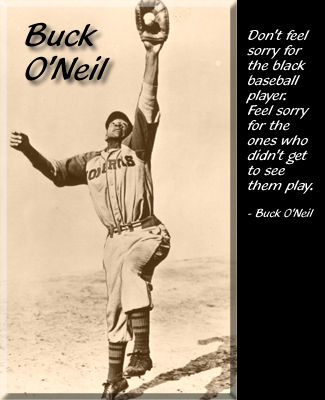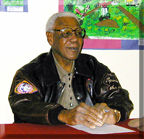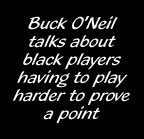
|
|
Don
Buford stayed in the same hotels as his teammates during road trips
(this was different than when he played with South Carolina just a few
years earlier). He perceived a more nuanced shift in racial attitudes.
while there was still hostility and racism, Buford detected something
else. By achieving on the field and interacting
with white fans, African American ballplayers had helped break down
ignorance and timeworn stereotypes. "Through
the vehicle of America's pastime, African Americans shattered Jim Crow
restrictions while simultaneously challenging long-held stereotypes
of racial inadequacy. The mere act of hitting,
fielding, and picking alongside white teammates and opponents, often
equaling or besting their feats, not only belied notion of black inferiority
but also signaled the eventual demise of Jim Crow."
"For
some, the prospect of watching blacks and whites interacting together
as equals for up to six months [in the minor leagues] was too much to
bear. Racists took their anger, fear, frustration,
and ignorance out on local black minor leaguers, hurling the vilest
of taunts their way. Their targets were hundreds of young ballplayers,
most of them in their late teens or early twenties. While learning to
hit a curveball or to catch a line drive, African American ballplayers
of the 1950s and 1960s also had to endure crude insults and degrading
living conditions. Yet they were still expected to perform at a high
level on the field. While some ended their careers in the South,
unable to bear up under the strain of racism and segregation, many persevered
and battled their way to the major leagues. The racial invective motivated
these ballplayers to excel and to demonstrate to whites that they were
tough enough to compete against white ballplayers and outplay them much
of the time."
"...the
most outstanding thing that summer was when it got so the players would
play catch with me. At first they'd be throwing the ball to each other,
and I'd be standing on the side. I started rolling the ball up on the
wire behind home plate and catching it when it came off. Then one day,
they said, "Get a bat. We'll play some pepper." I grabbed the bat and
started to pepper them. I was good at that. I hit it to each individual.
After that, they seemed to warm up to me. But I only felt accepted by
a few. When you're on a team and you're brushing shoulders with another
fella and he doesn't speak to you, it's kind of off. There were a few
guys who said little, to let me know they were friendly. They would
say, 'Don't worry, kid. Hang in there. You'll get 'em next time,' if
I hit a fly ball."
"Nobody
came up to me and said I wasn't welcome. But ignoring people is sometimes
worse than words."
"One
of the most disturbing things I experienced was the fact that there
were a lot of black players who had comparable skills to their white
counterparts, sometimes better, who were let go. This, the quota system,
really shook up people. They just were going to have so many blacks."
"While
their teams may have been integrated, not much else in their communities
was. Local laws and customs forced them to eat
and sleep apart from their white teammates. Most of the ballparks they
played in were segregated, with black fans being allotted seating in
cramped outfield bleachers. Some whites- fans, teammates, and
opponents- greeted their presence with racial epithets and slander.
Many white fans tolerated black major leaguers playing integrated spring
training games in their communities only because the players were there
for a very short time, not long enough to disrupt the social order." |
||||||||||||








